Investigative / Enterprise In-depth examination of a single subject requiring extensive research and resources.
Welcoming Relatives Home: The Return of the Lynx

The Kettle Mountain Range runs north-south along the eastern flank of the Colville Reservation and north into the Tribes’ ancestral territory in Colville National Forest. Lynx are known to live in the Kettle Mountains, but in very low numbers, and likely only as transients.
This story is the third in a three-part series produced in partnership with bioGraphic, an editorially independent magazine about nature and conservation powered by the California Academy of Sciences. Read parts 1 and 2 here.
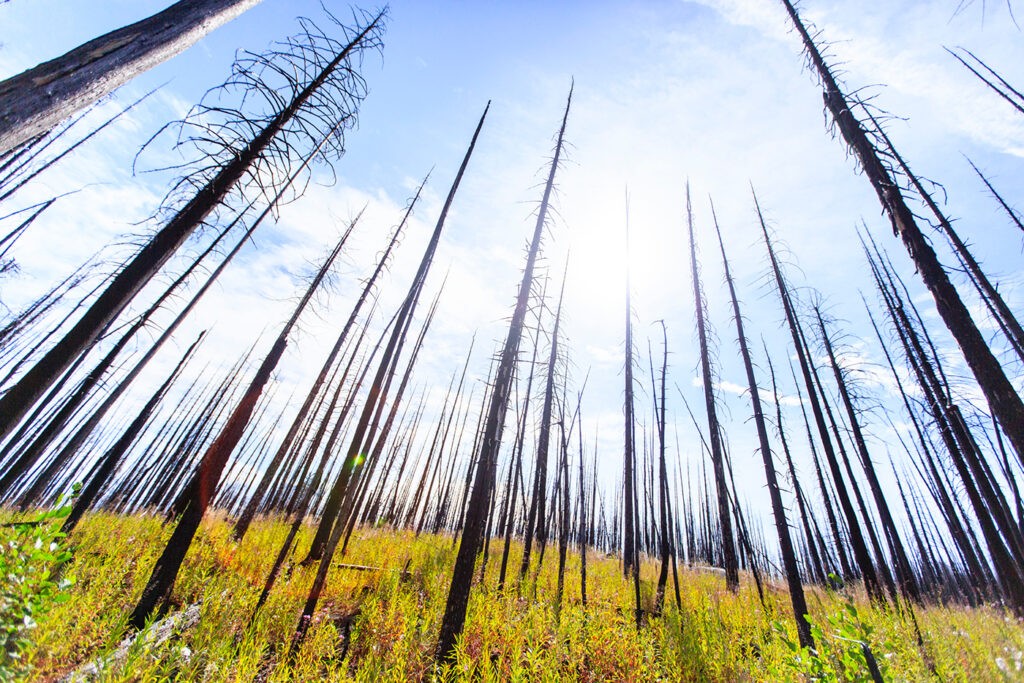
The species is listed as endangered in the state of Washington and threatened under the federal Endangered Species Act. But lynx once existed in abundance in Washington state—including on the Tribes’ ancestral territories—before colonization, habitat destruction, trapping, and climate-change-worsened wildfires all took their toll. These compounding factors have had a lasting impact on the region’s lynx population.
While the cats are protected in the United States, they are still trapped without limit in British Columbia. Many of these lynx might otherwise migrate south across the border. But without that natural influx, human-aided immigration may be necessary for the survival of lynx, at least in Washington state. In 2013, an interagency task force was formed and affirmed the importance of the Kettle Range in conserving lynx in the U.S. because of its viable connection to existing habitats and populations north of the border.
Climate change and the growing threat of catastrophic wildfires are key reasons for the lynx’s precarious conservation status. While lower-intensity fires historically created mosaics of lynx habitat, massive wildfires, which began in earnest throughout the region in 2002, have burned entire swaths of the Okanagan Mountain Range, which contains one of the state’s few core lynx habitats. By 2019, fires like these had substantially impacted 50% of the suitable lynx range in the Okanagan Mountains.
In this era of climate change, widespread drought, and wildfires of increasing frequency and intensity, the already small lynx population in Washington could soon be left without adequate habitat. Lynx disappearing from the state has become a real possibility.
Sanpoil District wildlife biologist Rose Piccinini, who is not a tribal member, grew up close to the land, due north of the reservation in an area known as the “North Half,” where the Tribes maintain their traditional hunting, fishing, and gathering rights. “I always am proud to say that I work for the Tribe, and I think part of it is that connection to the land and the connection to the animals, and the holistic way the Tribe looks at managing,” she says. “I don’t work in a vacuum, only looking at lynx and lynx habitat, but recognizing that all of the animals are important, and part of the picture and part of that balance that we’re trying to restore.”
Assessments conducted by Washington State University and the nonprofit Conservation Northwest between 2013 and 2019 determined the Kettle Mountains still contained a small number of likely transient lynx and adequate habitat and food for lynx to be reestablished there, despite the heavy impacts that megafires have had in the Okanogan Mountains.
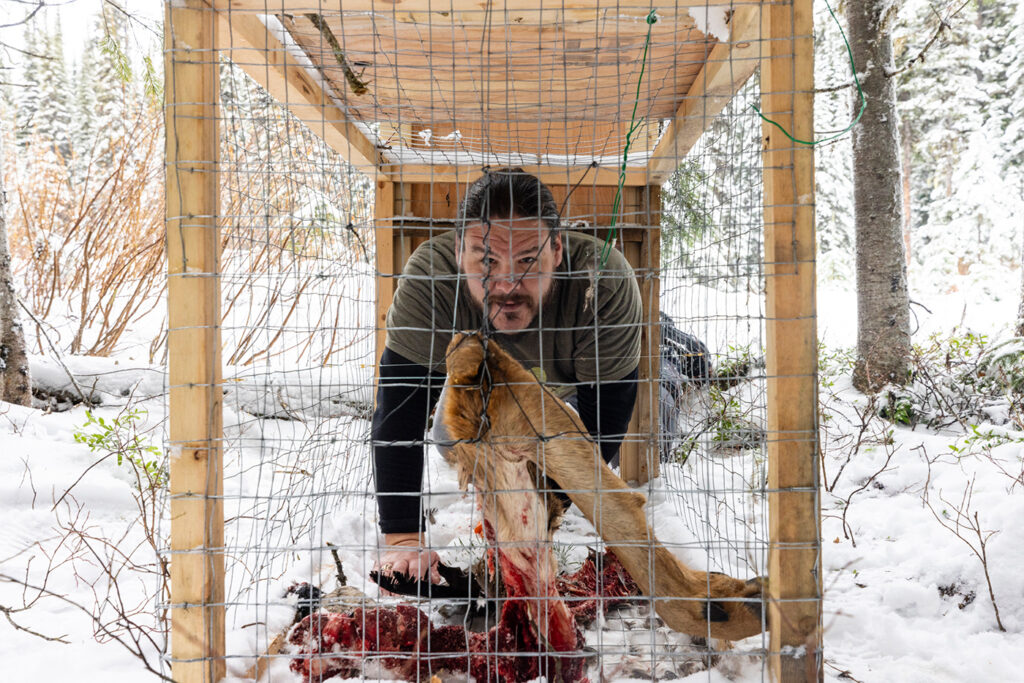
With this evidence in hand, Whitney, as the Tribes’ wildlife department director, gave his department the go-ahead to jump on board. The five-year plan was to translocate 10 lynx per year from British Columbia to the Colville Reservation. They hoped the lynx would make their homes there and begin to reproduce. In addition to restoring the community, a major goal was to provide an additional population in western North America, as well as increase the chances of connectivity with lynx in B.C. and an existing population in the Okanagan highlands.
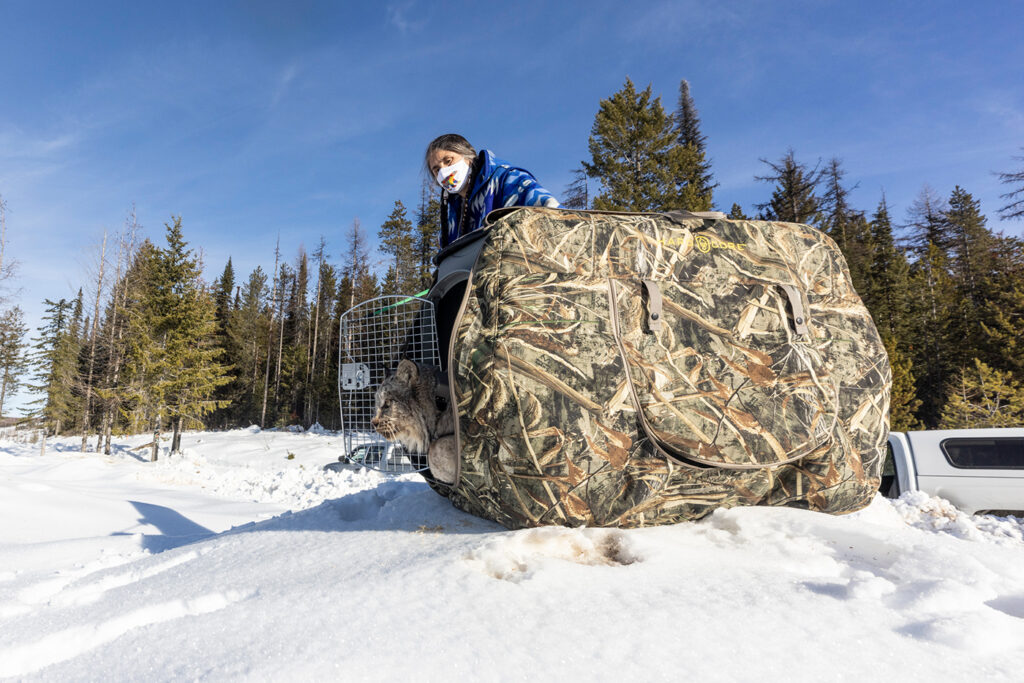
The first season, which ran from November 2021 to February 2022, saw three of the nine introduced lynx return to Canada. One of those later made her way back down to the Kettle Mountains, demonstrating that north-south connectivity was not only possible but happening.
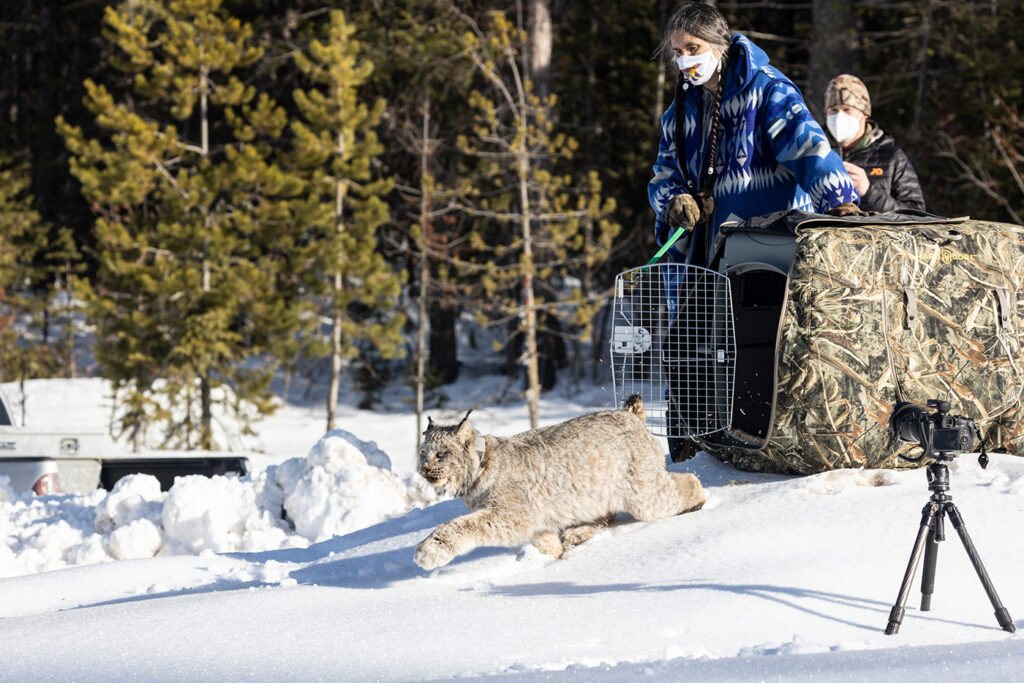
During the second season, in October 2022, the team trapped and released the animals earlier in the fall instead of through winter as they had in the first year. “They had an opportunity to get the lay of the land before the winter,” Piccinini says. The team trapped and released 10 lynx the second year, two of which had been captured the first year and had returned to B.C. Earlier this year, the team was planning to set up a geofence and use newer, better GPS collars to determine more precisely where and how lynx are moving between habitats, which may inform future wildlife corridor projects.
Now, at the beginning of the project’s third year, all metrics point to success. Of the surviving 17 lynx trapped and released in both years, 10 appear to have established themselves in the Kettle Range, while four have returned to B.C. Three of the relocated lynx have since died. This sobering news, however, is at least partially offset by the likelihood of a new litter of kittens born on lands north of the reservation boundary, which, if confirmed, will help bolster the local population. Piccinini is anxiously awaiting confirmation from trail cameras she and tribal members have set up in the area. Seven additional lynx were recently captured and of those five remain on the reservation.
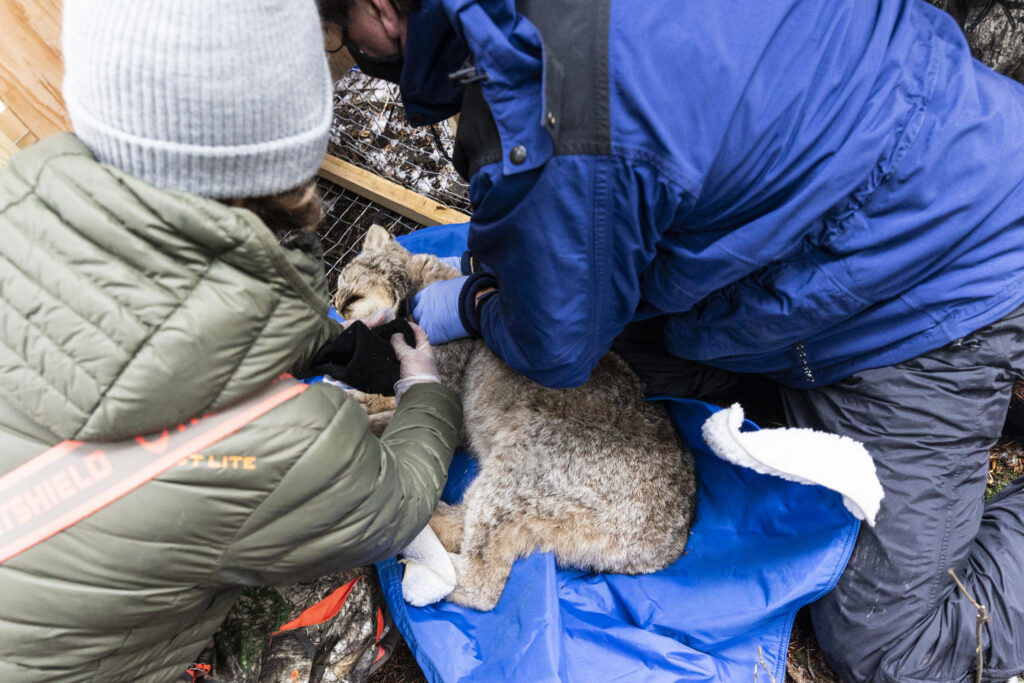
The return of lynx to the Colville Confederated Tribes’ lands represents an important geographical reciprocity. Some of Whitney’s human relatives, too, are reestablishing themselves in B.C., where they once lived with the lynx, the salmon, the elk, and myriad other relatives. “We’re intermingling,” he says. “They’ve taken care of the habitat up there for us and ensured our return, so we’re helping them return as well.”
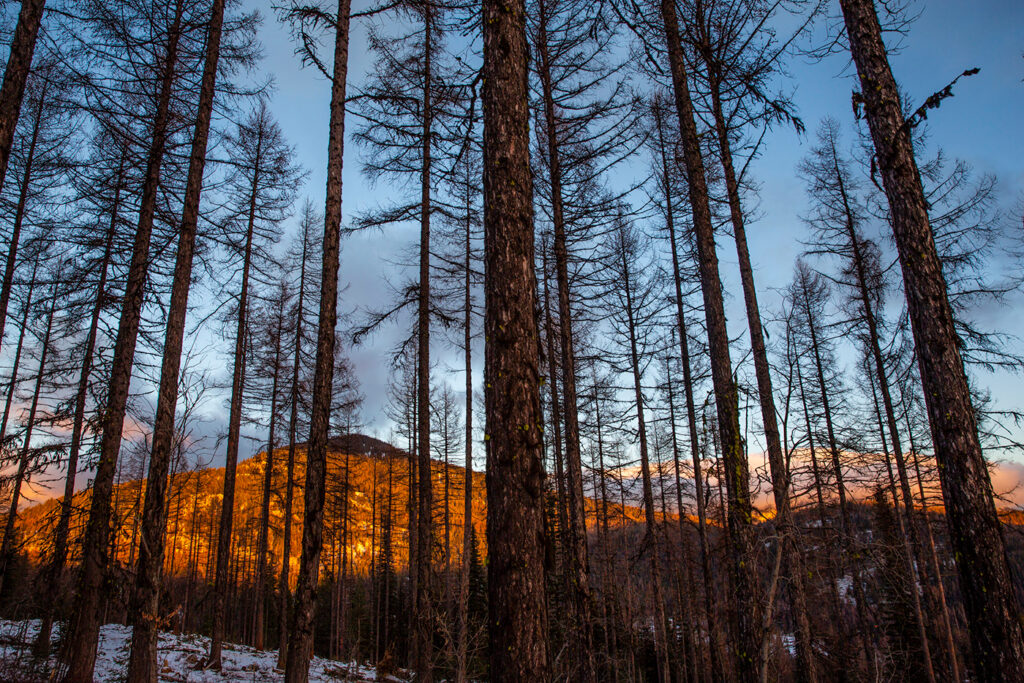
The territory of Whitney’s band, the Sinixt, extends from Kettle Falls, in Washington state, to the Big Bend area north of Revelstoke, B.C. The Canadian government declared the Sinixt people extinct in 1956 as they were negotiating the first Columbia River Treaty. “They declared us extinct so they didn’t have to do anything,” Whitney told me in his office in Inchelium, Washington, approximately 24 miles as the crow flies from Kettle Falls, which now lies dormant beneath Franklin D. Roosevelt “Lake.”
In order to have the Sinixts’ rights recognized in Canada, Whitney’s uncle, Richard Desautel (after whom Whitney is named), shot an elk in British Columbia on traditional Sinixt territory and turned himself in to the provincial wildlife law enforcement agency. After a series of court victories and appeals in 2021, Desautel and the Sinixt won a landmark supreme court victory in Canada that forced the government to recognize their Aboriginal rights in British Columbia. The Tribe recently opened an office in Nelson, B.C., to further assert those rights.
Meanwhile, the Tribes haven’t slowed their efforts to restore their community. Next up are burrowing owls, Whitney says, and if possible, buffalo. But only if they’re allowed to run free, he says. Whitney cites historical evidence of the presence of buffalo in the Tribes’ territory. “A lot of stories I’ve been told were of folks back in the day who would jump on their horses, ride over to Montana, and round up a bunch of buffalo and bring them back. And then they would persist, however many years, until they either ate them all, they dispersed too far, or they died,” he says. The Kalispel Tribe recently gifted the Colville Confederated Tribes 33 buffalo, which they released on the range at the beginning of October. “Our goals are being developed and will be compiled into a bison management plan over the winter months,” Whitney says.
Whitney loves the work of restoring his community. “We talk about animals like people, like friends,” he says. “I grew up in the woods learning about different animals, and spent time with my father and uncle. A lot of them aren’t around anymore,” he says.
Whitney thinks back to a separate ceremonial release of salmon he participated in at the inundated site of Kettle Falls, where he released salmon into waters that hadn’t known them since the dam blocked access to their ancestral spawning grounds. “It was pretty emotional,” he says. Not long after, some of those same salmon were caught by anglers in the Canadian reaches of the Columbia River. “We have proven that they will go to Canada,” he says.
Indeed the salmon are once again traveling north, in parallel with Whitney and his Sinixt relatives in Canada. And along their way, the spawning fish the Tribes have released will provide them information about the suitability of spawning habitat along their journey. In turn, this will likely put pressure on the U.S. government to ensure that salmon can pass through the dams on the Columbia River and spawn through the Colville Confederated Tribes’ lands on up into the Canadian headwaters of the Columbia River.
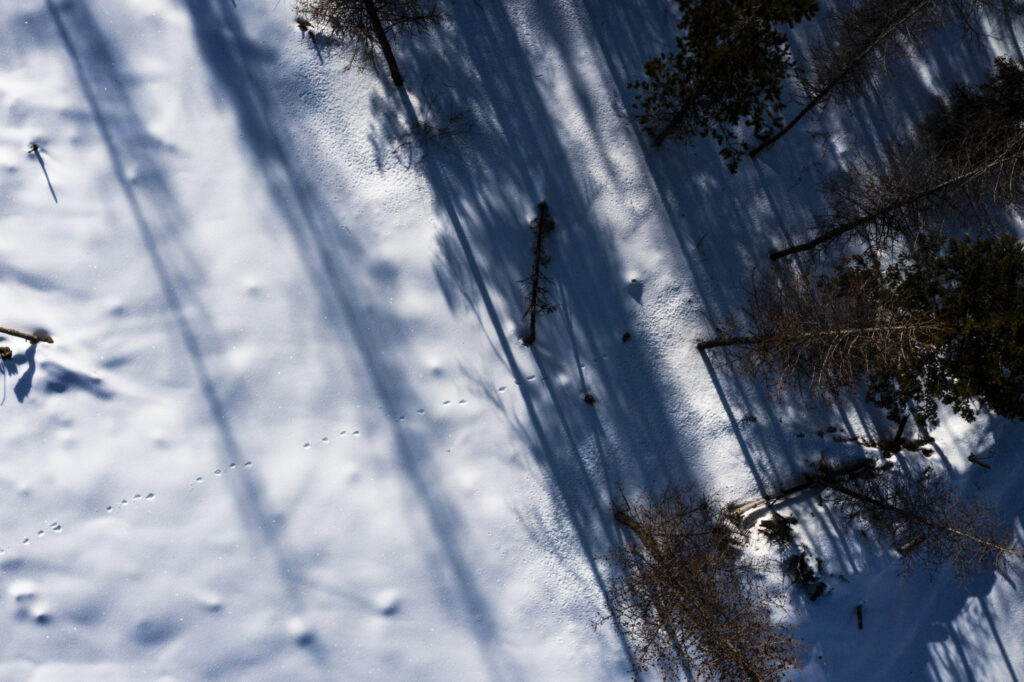
Essentially, voice by voice, individual by individual, the Tribes are working together to restore, protect, and sustain their community on lands under their jurisdiction by managing those lands in line with their cultural and traditional values—with the aid of science. By strengthening the very fabric of the ecosystems their ancestors have been stewarding since time immemorial, they’re strengthening their vital role in those systems—in that community, in that chorus. In this way, the community itself evolves together toward a natural balance that is abundant, resilient, and mutually reciprocal.
“It makes my heart happy,” Whitney says. “It heals me.”
This story is the third in a 3-part series produced in partnership with bioGraphic, an editorially independent magazine about nature and conservation powered by the California Academy of Sciences. Read part 1 here and part 2 here.
CORRECTION: This article was updated at 9:34 a.m. PT on Dec. 16, 2023, to clarify that the Tribes are referred to as the Colville Confederated Tribes or the Confederated Tribes of the Colville Reservation, not the Colville Confederacy. Read our corrections policy here.

|
Rico Moore
is a freelance journalist based in Port Townsend, Washington, whose work has been published by High Country News, The Margin, among others. He is also on the board of directors for the Society of Environmental Journalists.
|

|
Photos by David Moskowitz
is a photographer. Moskowitz’s current work focuses on wildlife and wildlands conservation, with an emphasis on mountain landscapes and the intersection of Indigenous sovereignty and conservation in western North America. He is the photographer and author of three books: Wildlife of the Pacific Northwest, Wolves in the Land of Salmon, and Caribou Rainforest. He resides in north-central Washington State. You can check out his work here: davidmoskowitz.net
|






